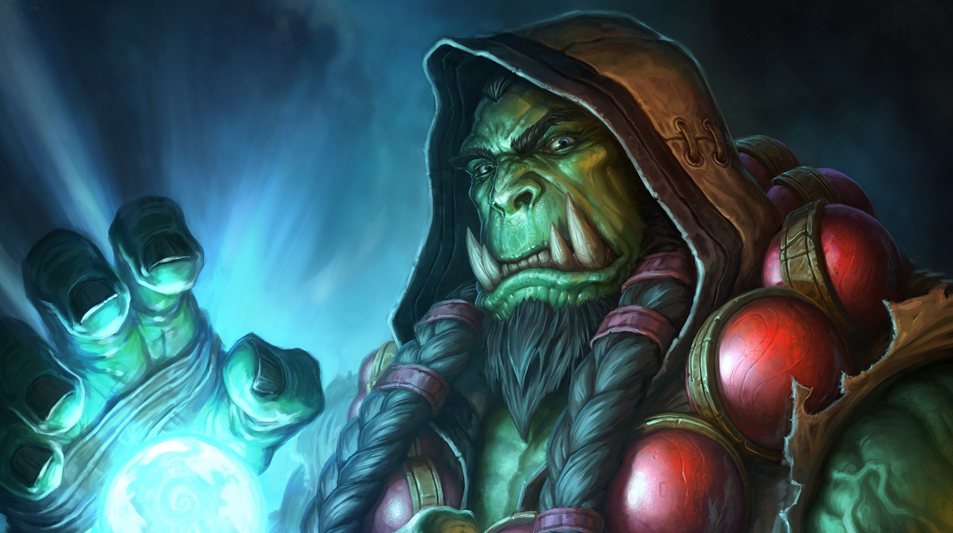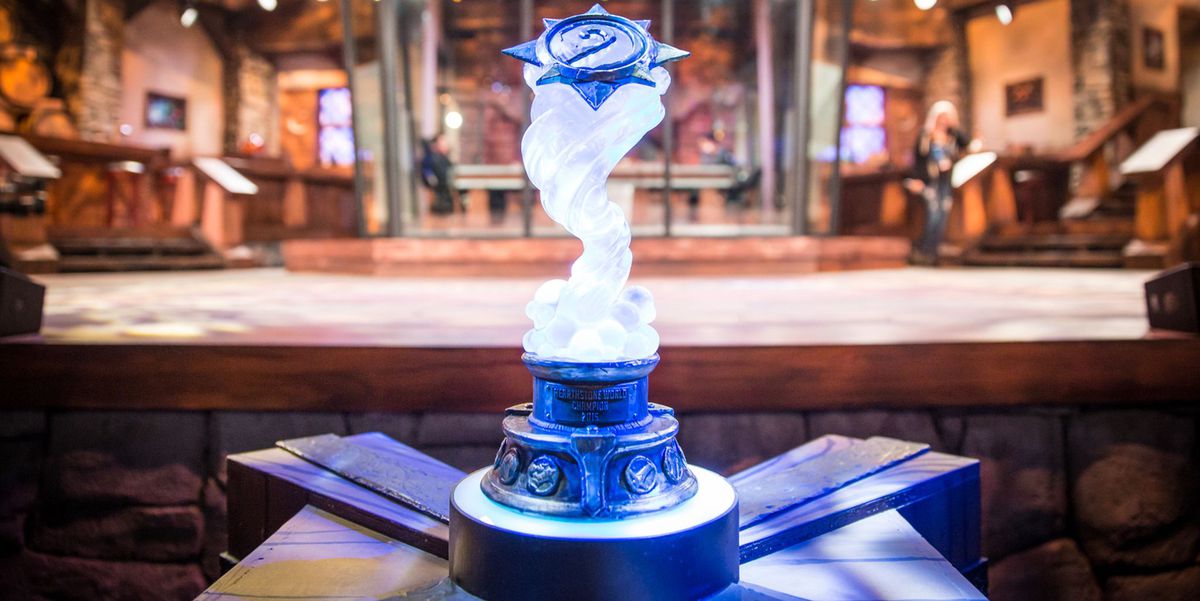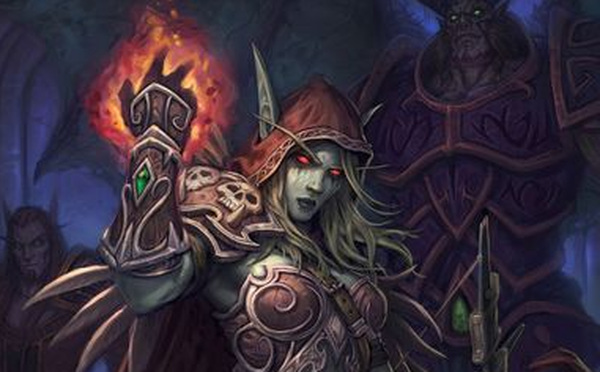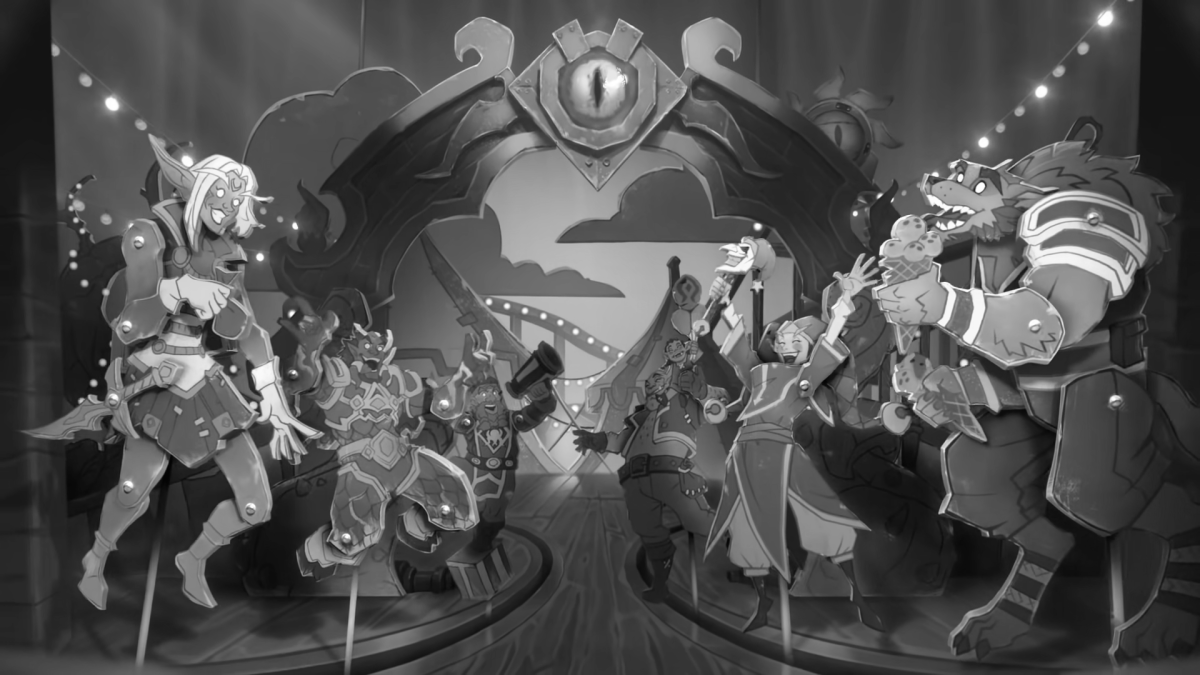It’s been an eventful year for Hearthstone.
From esports, to new cards, to set rotations, to dominating decks, a lot has happened. As both the Standard format and the Hearthstone Championship Tour entered their sophomore years, Blizzard looked to build on the significant milestones that had been reached in 2016.
That meant a more nuanced attempt to control the power of Hearthstone‘s meta in-game, and adding initiatives like the Hearthstone Global Games and the Inn-vitationals on the esports side.
This was the year that was in Hearthstone.
Aggro Shaman takes a nerf bat to the face

One of the first big community flashpoints of 2017 was the dominance of Aggro Shaman.
As the Year of the Kraken came to an end, Aggro Shaman was the strongest deck in the format. The cards that the historically weak class received in the League of Explorers expansion made the class arguably too strong. At one point it had the strongest one, two, three, and four drops in the game: Tunnel Trogg, Totem Golem, Tuskarr Totemic, and Flamewreathed Faceless.
The class was targeted by three nerfs in October 2016, changes to Abusive Sergeant, Tuskarr Totemic, and Rockbiter Weapon. Just a month or so later, however, Mean Streets of Gadgetzan brought Patches and Small-Time Buccaneer into the game. The pirates picked up the slack, alongside the early game weapon Spirit Claws, leading to the first nerfs of 2017—Sprit Claws and the Small-Time Buccaneer were hit.
Aggro Shaman was de-clawed, and Tunnel Trogg and Totem Golem rotated out soon after. And no deck was as dominant as Aggro Shaman had been.
No world champion, but three new winners

After crowning a world champion at Blizzcon three years in a row, Blizzard broke with tradition in 2017. Instead the World Championship was moved to January 2018, shifting the competitive calendar more closely in line with the Standard rotation schedule. That meant that Pavel Beltukov reigned as official world champion for longer than anyone in history!
Though there might not have been an official World Championship however, there were three seasonal global championships. Those three events allowed three stalwarts of the competitive scene to take top international plaudits for the first time, and establish themselves as favorites for January’s Championship.
The Winter Championship in March saw long-time Russian grinder Aleksey “ShtanUdachi” Barsukov take home the title, defeating Frank “Fr0zen” Zhang of the U.S. in the final. “DocPwn” of Canada and “SamuelTsao” of Taiwan also qualified for Worlds.
Europe took another title in the Spring, with Frederik “Hoej” Nielsen coming out on top, and then dominated in Shanghai, with Ukranian pair Aleksandr “Kolento” Malsh and Eugene “Neirea” Shumilin also making the top four. Anthony “Ant” Trevino of the U.S. broke up the trio. China failed to show up on home soil.
Kim “Surrender” Jung-soo won the Summer title, ahead of Jon “Orange” Westberg of Sweden and Canada’s Ryan “Purple” Murphy-Root. Jason Zhou became the only Chinese player to qualify through the championships, meaning that China will have just two representatives in the Worlds field of 16.
Reno says goodbye—players say good riddance

Reno Jackson. The name alone strikes fear into the hearts of Hearthstone players worldwide who had to suffer to stress and anguish that he caused.
Part of the League of Explorers expansion, Reno Jackson was a legendary card that restored a player’s life to full if there were no duplicate cards in your deck. On the face of it, this was an incredibly interesting card to be released. It changed the meta game with a stroke, creating a desire to build these “highlander” style decks. Warlock emerged as the strongest candidate for this, and Reno Warlock was the dominant control-style deck for months and months.
It could be incredibly frustrating to play against, though. You work hard to get your opponent as low as possible, preparing yourself for a final finishing turn—and all your work is undone in a stroke. It was also really frustrating as a deck to play—if you didn’t draw Reno, there were so many matchups where you were stuck.
Thankfully, Reno Jackson rotated out as the Year of the Mammoth hit.
Underdogs triumph at the Global Games
The Hearthstone Global Games was one of the most ambitious Hearthstone esports ever attempted. Players in 48 countries were given the chance to vote for three representatives, and alongside their country’s top HCT points earner the teams would compete in a mammoth tournament. The tournament played out over more than four months, with two group stages and single elimination playoffs.
Teams like Sweden, France, and Germany fell at the first hurdle despite being favorites in their groups. In there place, Malaysia, Taiwan, Greece, and others scored upsets. The top four teams advanced to the offline Global Games Finals, held at Gamescom in Germany. Three of the top teams identified from the start—the United States, Ukraine, and South Korea—were joined by underdogs the Czech Republic.
Stanislav Cifka was the obvious leader of the squad, with two-time HCT championship competitor Mikuláš “Pokrovac” Dio also driving the team forward. But aside from those two the quartet was rounded out by two relative unknowns—Petr “CzechCloud” Žalud and Jaromír “Jarla” Vysko?il.
But the unknowns came good. First the Czech side took our the star-studded United States team 4-3 in a back-and-forth match. After Ukraine dumped South Korea out 4-1, they were the favorites going into the grand final too. With two eventual 2017 World Championship competitors and 2016 Worlds runner-up Artem “DrHippi” Kravets in the lineup, they were one of the most decorated teams in the Games. It didn’t matter—the Czech Republic won out again, and became the first ever champions of the Global Games.
Blizzard goes in on strong Classic cards

After introducing the Standard set rotation in 2016, Blizzard was out to make some tweaks for the sophomore year.
The problem with the set rotation was the permanence of the Classic and Basic sets. While some argued that those sets should also rotate, Blizzard is very keen that there always be a permanent evergreen set for both new and returning players alike.
Instead, Blizzard tried a couple of other ways to tone down the power of the sets. That started with the introduction of the Hall of Fame. As the years changed from Kraken to Mammoth, six cards were removed from the Classic set and sent to the Hall of Fame. They included two of the most powerful legendaries, Ragnaros and Sylvannas, the game’s most ubiquitous five drop Azure Drake.
Three classes also lost a card. Conceal, Ice Lance, and Power Overwhelming were the three cheap, powerful spells that were taken out of the format.
This wasn’t the only attempt Blizzard made to nerf the Classic set this year. In nerfing Spreading Plague to try and reign in Jade Druid, Blizzard also nerfed Murloc Warleader, Hex, Fiery War Axe, and Innervate—the latter two being cards that were almost auto-includes in every Warrior and Druid deck.












Published: Dec 27, 2017 01:45 pm